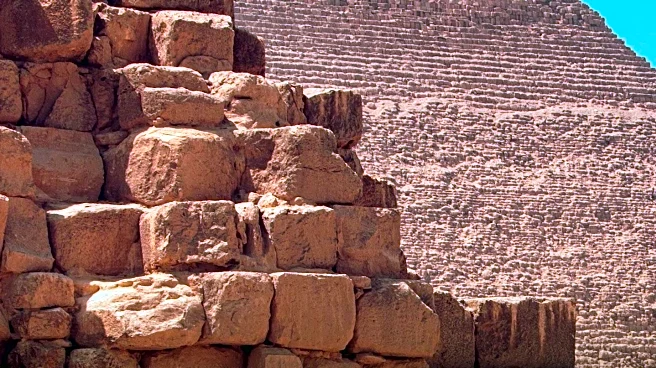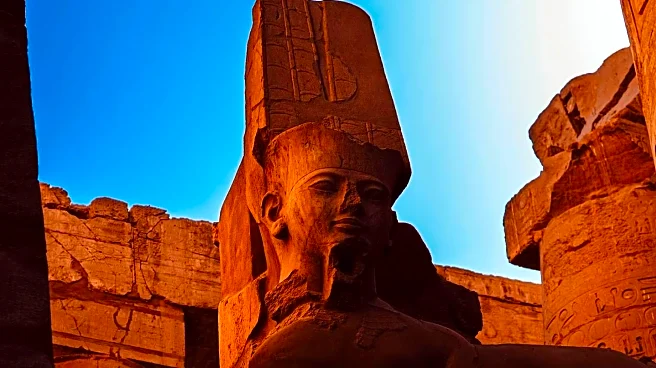What's Happening?
The tomb of Pharaoh Amenhotep III, one of the largest in Egypt's Valley of the Kings, has reopened to the public following a two-decade-long renovation. Located near Luxor, the tomb was discovered in 1799 and had been looted of its contents, including the sarcophagus. The restoration, led by Japanese experts, involved refurbishing the tomb's paintings and structural elements. The tomb features a 118-foot-long passageway leading to the main burial chamber and two additional chambers for the pharaoh's wives. The reopening coincides with Egypt's efforts to revitalize its tourism sector, which has been impacted by political instability since 2011.
Why It's Important?
The reopening of Amenhotep III's tomb is a significant cultural and economic event for Egypt. It underscores the country's commitment to preserving its rich historical heritage and attracting international tourists. Tourism is a vital component of Egypt's economy, providing substantial foreign currency revenue. The restoration of such historical sites is expected to enhance Egypt's appeal as a travel destination, potentially boosting visitor numbers and aiding economic recovery. The timing of the reopening, ahead of the Grand Egyptian Museum's inauguration, highlights a strategic push to rejuvenate the tourism industry.
What's Next?
With the tomb now open, Egypt anticipates increased tourist interest, particularly from those fascinated by ancient history. The upcoming opening of the Grand Egyptian Museum near the Giza Pyramids is expected to further bolster tourism. Authorities may continue to focus on restoring and promoting other historical sites to sustain this momentum. The success of these initiatives could influence future investments in cultural preservation and tourism infrastructure, potentially leading to broader economic benefits.
Beyond the Headlines
The restoration of Amenhotep III's tomb not only serves economic purposes but also raises questions about the ethical responsibilities of preserving cultural heritage. The involvement of international experts highlights the global interest in Egypt's ancient history. This collaboration may set a precedent for future restoration projects, emphasizing the importance of cross-cultural partnerships in heritage conservation.












